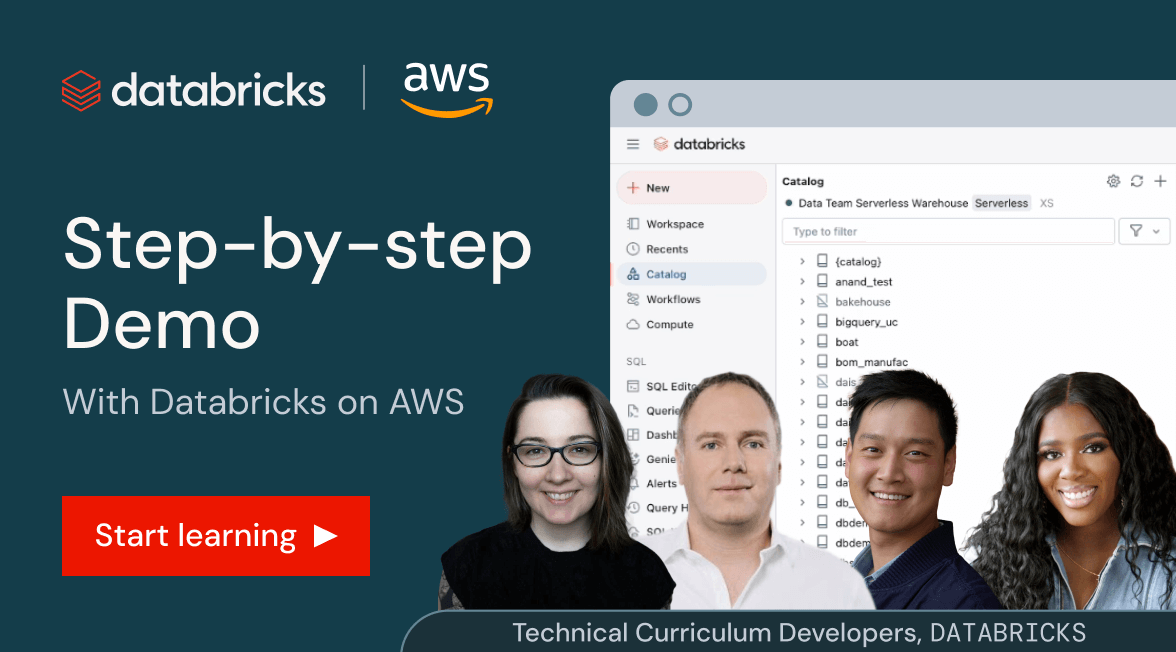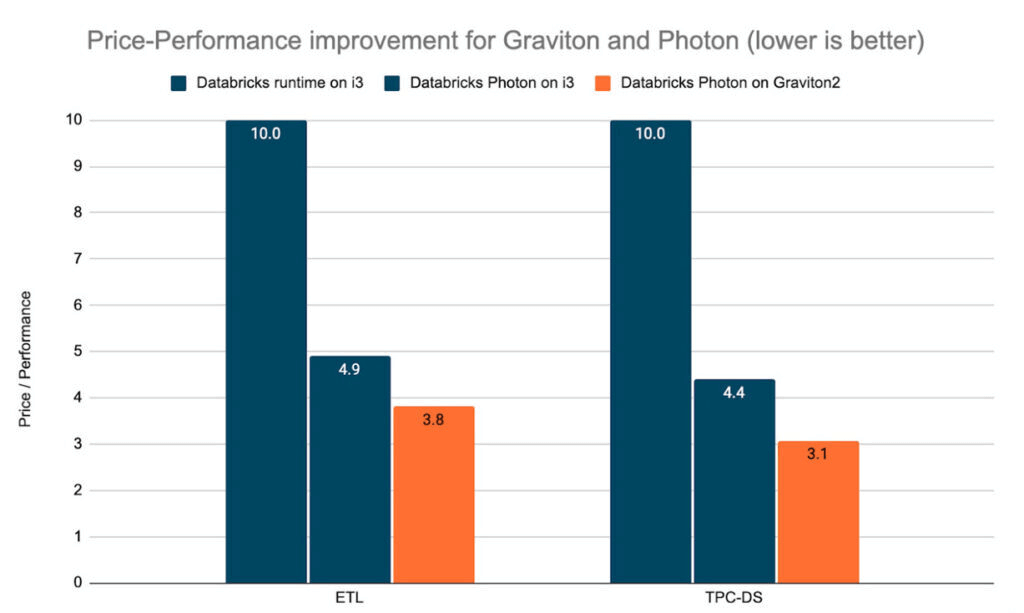Databricks on AWS
The simple, unified data platform seamlessly integrated with AWS
Available in AWS Marketplace

Databricks on AWS allows you to store and manage all your data on a simple, open lakehouse platform that combines the best of data warehouses and data lakes to unify all your analytics and AI workloads.
Why Databricks on AWS?
Featured integrations

AWS Graviton
Databricks clusters support AWS Graviton instances. These instances use AWS-designed Graviton processors that are built on top of the Arm64 instruction set architecture. AWS claims that instance types with these processors have the best price/performance ratio of any instance type on Amazon EC2. Read more
Use Cases
Awards and Recognitions

Resources
Whitepapers
Webinars
Industries
Ready to get started?


